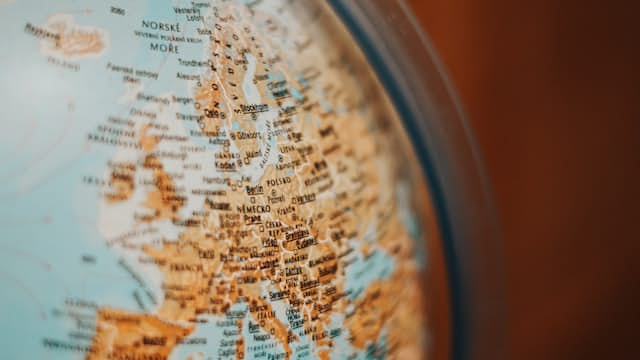
Geography jokes
There was a blonde, a redhead, and a brunette. They were all trapped on an island, and the nearest shore was 50 miles away.
The redhead swam, trying to make it to the other shore. She swam 15 miles, drowned, and died.
The brunette swam 24 miles, drowned, and died.
The blonde swam 25 miles, got tired, and swam back.
I was sitting in a bar one day and two really large women came in, talking in an interesting accent. So I said, "Cool accent, are you two ladies from Ireland?" One of them snarled at me, "It's Wales, Dumbo!" So I corrected myself, "My apologies, so are you two whales from Ireland?"
America Twin Tower: "Hey, have you seen the Malaysian Twin Tower? I have, but only from 1971 to 2001."
Malaysian Twin Tower: "I STOOD LONGER!"
Q: What's the most popular dish in Africa?
A: The empty one!
What's the difference between Palestine and yo mama?
Yo mama can be found on Google maps.
Your hairline goes so far back you can see a full world scale map in your forehead reflection.
Rapboat so fat he got more chins than Chinatown.
What plate goes to Bikini Bottom?
Malaysia Flight 370.
In Israel, they don't have Walmarts; they only have Targets.
What do you call a group of white people running down a hill?
An avalanche.
COVID is like fashion...
We started hearing about it in Italy...
Became popular in LA and NYC...
Florida ignored it...
And it was all made in China in the end.
What are the 2 fights Africa could never win?
A food fight and a water fight!
TV: Water found on Mars...
Mars: 1
Africa: 0
In what city do you always lose your mum? Mumbai.
How do you make someone in Africa disappointed?
Sing "Raindrops Keep Falling on My Head."
For centuries, Japan’s feudal dictators, called Shoguns, enforced strict laws that kept people from leaving or entering the country. This practice isolated Japan from the rest of the world. By the middle of the 19th century, Japan’s isolationism was creating problems for the United States’ whaling industry whose ships needed coal, food, and water available in Japanese ports. And sailors who were shipwrecked on the coast of Japan needed protection from mistreatment.
In November 1852, President Millard Fillmore sent an expedition to Japan to solve these problems. Led by Commodore Matthew C. Perry, the expedition had both steam-powered and sail-powered warships and several hundred men. Perry’s task was to persuade the Japanese to sign a treaty with the United States that would open Japanese ports and protect shipwrecked sailors. On July 8, 1853, the Perry expedition sailed into Edo Bay about thirty miles from the city of Edo (modern Tokyo).
During talks with the Shogun’s representatives, the idea of a treaty was repeatedly rejected. But Perry didn’t give up. Finally, in February 1854, the Japanese agreed to negotiate a treaty. The Treaty of Kanagawa established peace between the two countries, opened two ports to U.S. shipping, and protected shipwrecked sailors. It was signed on March 31, 1854.
Perry’s expedition also opened Japan to the rest of the world. Within two years, Japan signed similar treaties with Russia, Holland, and Britain.
What’s the most emo country in the world?
Qatar.
Bin Laden’s kid comes sad from school.
“Dad, I got an F in Geography class!”
“Why is that?”
“The teacher asked me what’s the tallest building in New York and I said ‘Empire State Building.’”
Bin Laden waits a moment and then replies, “Let dad handle this one.”
Your mama is so skinny that when she went to go outside, the slightest breeze flew her all the way to New Mexico.
I don’t get why Katniss was bitching so much in ‘The Hunger Games’ books. Ethiopia has been competing for years and I don’t hear any of them complaining.